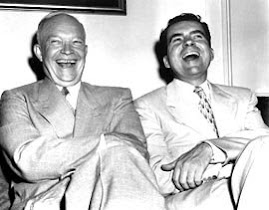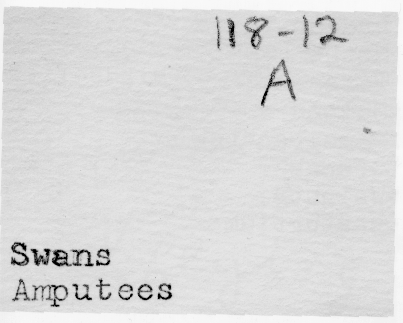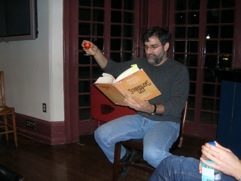 Most of the poems are annotated here, presented in order of publication, book by book through Stevens’s career; a readable index of title directs you, alternatively, by the poem. Cook’s succinct summaries and annotations are confidently expert. If you are reading “Prelude to Objects” and come across the reference there to the S. S. Normandie, you will know from Cook that it was a famous French transatlantic passenger liner (136). Of course, even an inexperienced Googler would have that annotation in a quarter of a minute. In the same poem, if coming upon the “Ideas of Order”-like phrase “foamed from the sea” you take “foamed,” as in the idiom “foamed up,” to mean arising sea-like out of the sea, you could proceed through the verse satisfactorily. But having Cook’s guide by your side, you would also learn that this is certainly a reference to Aphrodite, whose name, etymologically, means “born of the foam” (136). You are still left with the problem of reconciling such a mythological idiom with Stevens’s famous “guerilla I,” the poem’s stealthy and aggressive subjectivity, but with Cook’s help you are several steps further along than you would otherwise be.
Most of the poems are annotated here, presented in order of publication, book by book through Stevens’s career; a readable index of title directs you, alternatively, by the poem. Cook’s succinct summaries and annotations are confidently expert. If you are reading “Prelude to Objects” and come across the reference there to the S. S. Normandie, you will know from Cook that it was a famous French transatlantic passenger liner (136). Of course, even an inexperienced Googler would have that annotation in a quarter of a minute. In the same poem, if coming upon the “Ideas of Order”-like phrase “foamed from the sea” you take “foamed,” as in the idiom “foamed up,” to mean arising sea-like out of the sea, you could proceed through the verse satisfactorily. But having Cook’s guide by your side, you would also learn that this is certainly a reference to Aphrodite, whose name, etymologically, means “born of the foam” (136). You are still left with the problem of reconciling such a mythological idiom with Stevens’s famous “guerilla I,” the poem’s stealthy and aggressive subjectivity, but with Cook’s help you are several steps further along than you would otherwise be.Long admired for her attention to syntactical word-play, Cook has a fine way here of describing meter as an aspect of form. This one sentence on section 1 of “Peter Quince at the Clavier” does the critical work of many another commentator’s full page: “Tetrameter tercets with occasional rhyme, a clavier interrupted by bass violins playing pizzicati” (74). A masterfully wrought eight-word sentence on the first three stanzas of “The Idea of Order at Key West”—“Their argument is tight, their rhythm is ocean-like” (94)—again precisely describes the rhetoric and form but also presents the poem’s main tension between rationally organized content of human experience and oceanic feelings about the power of the muse.
The book is littered with many other marvelous condensations. When the “firecat” of “Earthy Anecdote” is said to be found in “[m]inor Indian legends tell[ing] of a cougar or mountain lion who brings either helpful or destructive fire”—and we learn that while recent tellings use the very term “firecat” “but the relevant Smithsonian historical volumes on the American Indian do not record the word” (31)—we easily imagine hours of research done in the service of this modest qualification. It’s a valuable nuance. If Stevens did invent the word “firecat” for this bit of modernist ethnography, we know he nonetheless got his folklore just right.
These are specific advantages resulting from the guidebook format, its special constraints, which Professor Cook has mastered. The book has more conventional virtues as well—such as the finest introductory close reading of “The Man with the Blue Guitar” that has been published. This reviewer happens to agree with Cook’s assessment that “Blue Guitar” is “a pivotal, crucial series, richer than it may appear” (113), a work “packed with thought as Stevens positioned himself for the last quarter of his life” (17). Doubters of such a claim will still need to reckon with this assessment.
 Evenhandedness—-giving each poem its proportionate due—-is impossible in such a project, and readers must anticipate that some significant poems are too briefly annotated. “Imago,” arguably an important poem, is presented here in 4 ½ lines, while “How Now, O, Brightener…,” a lesser work commended by few, is given four times the space. In the former poem, the line “Who can pick up the weight of Britain” is said to echo Job 38 and to refer to postwar Marshall Plan reconstruction, but nothing about Stevens’ use of imago, the Freudian concept of representations presented by the unconscious to the ego. Is there a psychoanalytic aspect to postwar language used to “say to the French here is France again”? Yes, surely. Readers will have to piece together that connection on their own.
Evenhandedness—-giving each poem its proportionate due—-is impossible in such a project, and readers must anticipate that some significant poems are too briefly annotated. “Imago,” arguably an important poem, is presented here in 4 ½ lines, while “How Now, O, Brightener…,” a lesser work commended by few, is given four times the space. In the former poem, the line “Who can pick up the weight of Britain” is said to echo Job 38 and to refer to postwar Marshall Plan reconstruction, but nothing about Stevens’ use of imago, the Freudian concept of representations presented by the unconscious to the ego. Is there a psychoanalytic aspect to postwar language used to “say to the French here is France again”? Yes, surely. Readers will have to piece together that connection on their own.Even when, as rarely is the case, the interpretive commentary fails to engage the poem sufficiently, or seems imbalanced, Eleanor Cook’s Reader’s Guide is otherwise an excellent companion to the more traditional bibliography prepared by J. M. Edelstein many years ago. Readers who work straight through the book—to be sure, it was designed to enable other approaches—will receive the best first lesson in the whole arc of Stevens’s work. Although this book would seem to provide an atomized, poem-by-poem experience, its reader's greatest reward is the sense he or she gets of the overall shape of the Stevensean project.






 "I teach horizontally, meaning that while I might begin with a fixed idea of what I'm going to teach that day, I let it drift rhizomatically way off topic, often pulling it back when it gets too far. I rely on non-fixed materials to teach this way; the whole world is at my fingertips. Should I go off on a tangent about John and Rauschenberg and their love relationship as expressed in Rauschenberg's bed, an image of that bed is always a click away. From there, we can head anywhere into the non-fixed universe, be it film, text or sound. And of course, that always takes us elsewhere. As Cage says, 'We are getting nowhere fast.'"
"I teach horizontally, meaning that while I might begin with a fixed idea of what I'm going to teach that day, I let it drift rhizomatically way off topic, often pulling it back when it gets too far. I rely on non-fixed materials to teach this way; the whole world is at my fingertips. Should I go off on a tangent about John and Rauschenberg and their love relationship as expressed in Rauschenberg's bed, an image of that bed is always a click away. From there, we can head anywhere into the non-fixed universe, be it film, text or sound. And of course, that always takes us elsewhere. As Cage says, 'We are getting nowhere fast.'" 

 that anyone has yet got the imaginative measure of that terrifying day six years ago. Certainly our Tolstoy has not crawled out of the rubble. The closest we have, Don DeLillo, succeeded as an essayist-journalist ("In the Ruins of the Future: Reflections on Terror and Loss in the Shadow of September,” Harper’s, December 2001) but, to my mind, failed as a novelist ("Falling Man"). One reason, perhaps, is that the remembered emotion was instantly buried under a pile of cultural junk.' - Tod Gitlin in his review of Susan Faludi's The Terror Dream (written for
that anyone has yet got the imaginative measure of that terrifying day six years ago. Certainly our Tolstoy has not crawled out of the rubble. The closest we have, Don DeLillo, succeeded as an essayist-journalist ("In the Ruins of the Future: Reflections on Terror and Loss in the Shadow of September,” Harper’s, December 2001) but, to my mind, failed as a novelist ("Falling Man"). One reason, perhaps, is that the remembered emotion was instantly buried under a pile of cultural junk.' - Tod Gitlin in his review of Susan Faludi's The Terror Dream (written for 






























